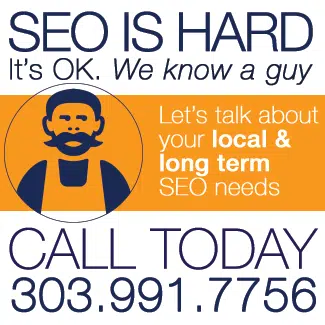Updated: 18 October 2025
Your website is probably the first thing potential customers see when they search for your business. It needs to work well, look professional, and make it dead simple for people to contact you. These practical design tips focus on what actually matters for small business websites—not fancy features you don’t need, but the essentials that turn visitors into customers.
1. Start With Mobile Design (Because That’s Where Your Customers Are)
Over 60% of website traffic now comes from mobile devices, according to recent mobile traffic statistics. That’s not a trend—it’s how people browse the web. Mobile-first design means building your site to work perfectly on smartphones first, then adapting it for larger screens.
Feeling overwhelmed by these small business website design tips? You don’t have to do it alone. The Affordable Web Guy specializes in creating professional, effective websites that are optimized for local businesses just like yours. Visit The Affordable Web Guy to see how a professional can build a site that helps your business grow without the headache.
This isn’t just about shrinking everything down. It’s about understanding how people use their phones differently. They’re often on the go, looking for quick answers. A plumber’s website needs that emergency service number right at the top, clickable and ready. A restaurant needs their menu and ordering button front and center.
What makes mobile design work:
- Essential content first: Put your phone number, address, and main services where thumbs can reach them easily
- Bigger buttons: Make clickable elements at least 44×44 pixels per WCAG accessibility guidelines—nobody likes playing whack-a-mole with tiny links
- Fast-loading images: Compress your photos so they don’t eat up mobile data plans
- Real device testing: Check your site on actual phones, not just browser tools
2. Make Navigation Obvious (Not Clever)
Your website menu isn’t the place to get creative with naming. “Solutions” means nothing. “Plumbing Services” tells people exactly what they’ll find. Clear navigation is about respecting your visitors’ time and making their journey through your site straightforward.
Keep your main menu to seven items or less. Any more and people’s eyes glaze over. Use terms your customers actually use—if they call asking about “drain cleaning,” don’t label it “pipe maintenance” on your website.
Navigation that works:
- Simple labels: “About,” “Services,” “Contact”—not “Our Journey” or “Connect”
- Consistant placement: Keep the menu in the same spot on every page
- Search function: If you have lots of content, add a search bar
- Logical grouping: Put related services under one dropdown menu
3. Speed Is Everything
If a page takes longer than 3 seconds to load, 53% of mobile visitors will leave, according to page speed research. Google also penalizes slow sites in search rankings, so speed affects both user experience and visibility.
The bounce rate for pages loading within 2 seconds is 9%, but soars to 38% when load time hits 5 seconds, per Pingdom’s analysis. The biggest culprit is usually images. That gorgeous 5MB hero photo might look amazing on your designer’s monitor, but it’s killing your load time.
Speed fixes that matter:
- Image optimization: Compress photos to under 200KB whenever possible
- Quality hosting: Cheap hosting costs you customers—invest in reliable servers
- Browser caching: Let returning visitors load faster by storing some elements locally
- Clean code: Remove unnecessary plugins and scripts that bog things down
4. Professional Design Builds Trust
Research shows it takes just 50 milliseconds for users to form an opinion about your website, according to studies on first impressions. A dated or amateurish design immediately signals that maybe your business isn’t quite professional enough. You don’t need to spend thousands, but you do need consistency.
Pick two or three colors and stick with them. Choose fonts that are easy to read—save the fancy scripts for wedding invitations, not body text. Use real photos of your actual work or team when possible, not generic stock images everyone’s seen a hundred times.
Design elements that build credibility:
- Consistent branding: Same colors, fonts, and style throughout
- Quality images: Professional photos or high-quality stock images
- White space: Don’t cram everything together—let your content breathe
- Modern layout: Update that 2010 design—trends matter more than you think
5. Tell People What to Do Next
Every page needs a purpose, and that purpose should be crystal clear. Your calls-to-action (CTAs) are the signs pointing visitors toward becoming customers. “Learn More” is weak. “Get Your Free Quote” tells them exactly what happens next.
Make your CTAs impossible to miss. Use contrasting colors that pop against your background. Place them where people naturally look—at the end of content sections, in the header, and definitely above the fold on your homepage.
CTAs that convert:
- Action verbs: “Schedule,” “Download,” “Call Now”—not “Submit” or “Click Here”
- Strategic placement: Multiple CTAs per page, but not overwhelming
- Visual contrast: Buttons that stand out from surrounding content
- Mobile-friendly: Large enough to tap easily on phones
6. Why Should Google Care About Your Site?
SEO isn’t magic—it’s about making your website useful for both humans and search engines. Start with the basics: telling Google what your pages are about through proper titles, descriptions, and content.
Focus on local SEO if you serve a specific area. Create location pages for each town you service. Include your full address on every page (usually in the footer). Get listed in Google My Business and keep your information consistent everywhere online.
SEO basics that work:
- Keyword research: Find out what your customers actually search for
- Location pages: Create content for each area you serve
- Meta descriptions: Write compelling summaries for search results
- Quality content: Answer the questions your customers are asking
For comprehensive SEO and web design support tailored to small businesses, check out our small business website services that cover everything from local optimization to ongoing maintenance.
7. Prove You’re Legitimate
New visitors don’t know you yet. They need reassurance that you’re a real business that delivers on promises. This is where social proof comes in—testimonials, reviews, certifications, and any other evidence that you’re trustworthy.
Research shows that 64% of online shoppers who have a bad experience on a site will go to a different store, according to website load time statistics. Don’t hide your credentials. If you’re licensed and insured, say so prominently. Display those Google reviews. Show logos of businesses you’ve worked with. Include real testimonials with names and faces when possible.
Trust signals that matter:
- Recent testimonials: Real reviews from actual customers
- Professional certifications: Industry credentials and memberships
- Security badges: SSL certificates for data protection
- Team information: Photos and bios of key staff members
8. Make Contact Information Impossible to Miss
How many potential customers have you lost because they couldn’t find your phone number? Your contact information should be everywhere—header, footer, contact page, and throughout your content where relevant.
Nielsen Norman Group recommends touch targets of at least 1cm × 1cm (0.4in × 0.4in) for mobile interfaces per their research on touch targets. Make phone numbers clickable on mobile. Include your full address (8310 S Valley Hwy STE 300, Englewood, CO 80112 for us). Show your hours clearly. Give people multiple ways to reach you because everyone has preferences.
Contact information essentials:
- Clickable phone numbers: Tap to call on mobile devices
- Multiple contact methods: Phone, email, contact form
- Business hours: Clearly displayed and updated for holidays
- Physical address: Full address with map on contact page
Visit our contact page to see these principles in action.
Making It All Work Together
These eight elements aren’t independent—they work together to create a website that actually serves your business. Mobile design without speed optimization frustrates users. Great CTAs without trust signals feel pushy. Professional design without clear navigation looks good but doesn’t convert.
Start with the basics. Make sure people can find you, contact you, and understand what you offer within seconds of landing on your site. Once those fundamentals are solid, you can refine and improve. Your website should be generating leads, building credibility, and working as hard as you do. If it’s not, it’s time to make some changes.
Remember, your website is often the first impression potential customers have of your business. Make it count. Whether you’re a plumber, contractor, therapist, or any other small business owner, these principles apply. Focus on what your customers need, make their experience smooth, and the results will follow.
For pricing information on professional website design and development, visit our rates page. Check out what other small business owners say about working with us on our reviews page.



Leave A Comment